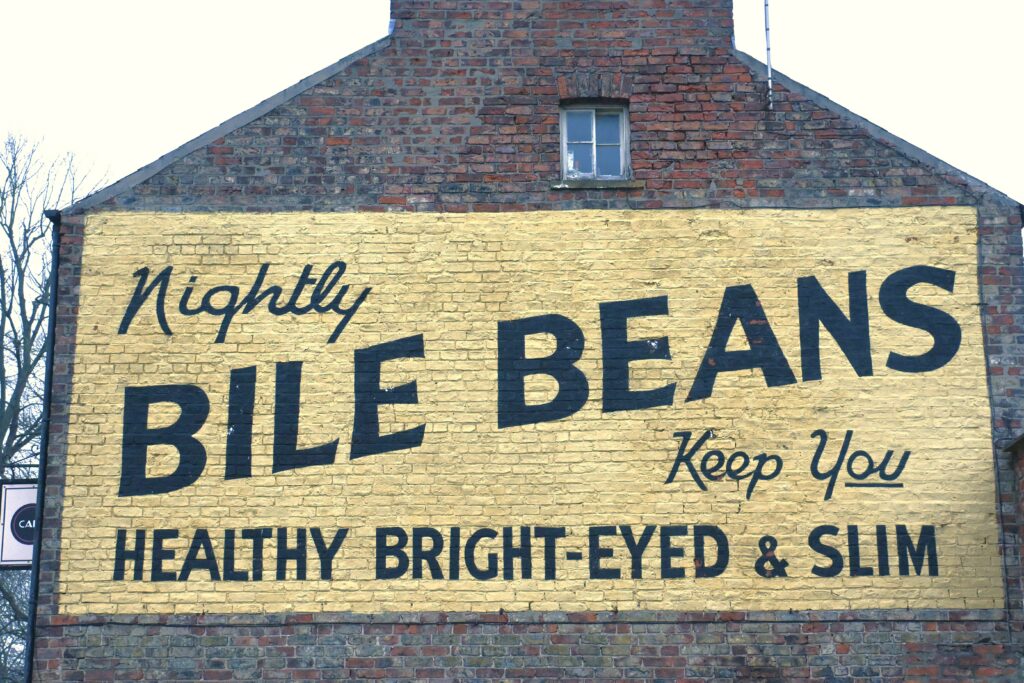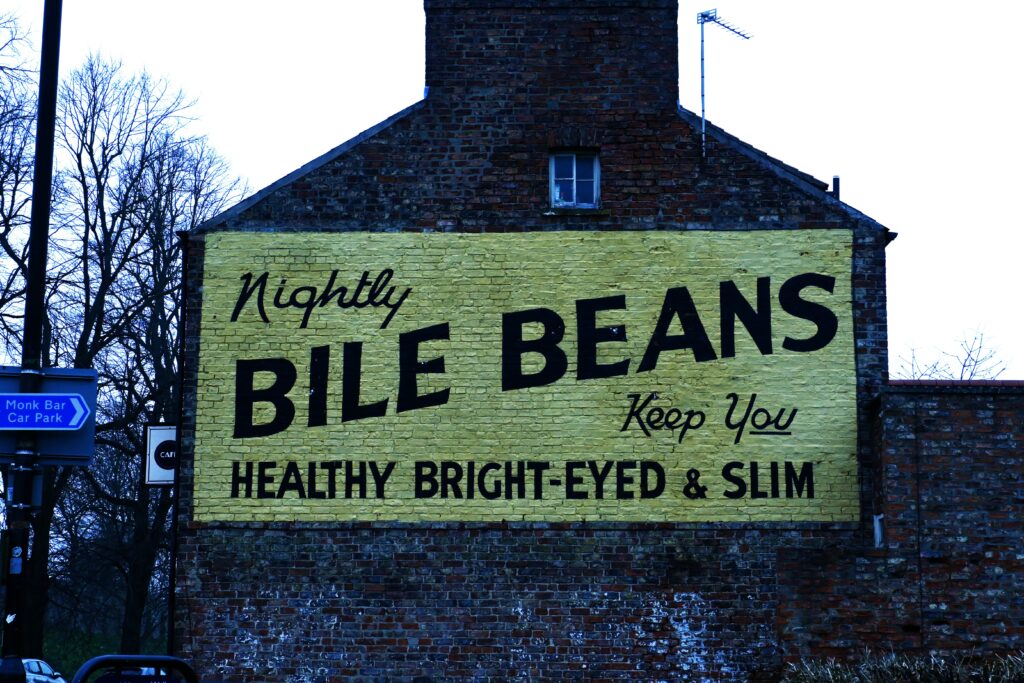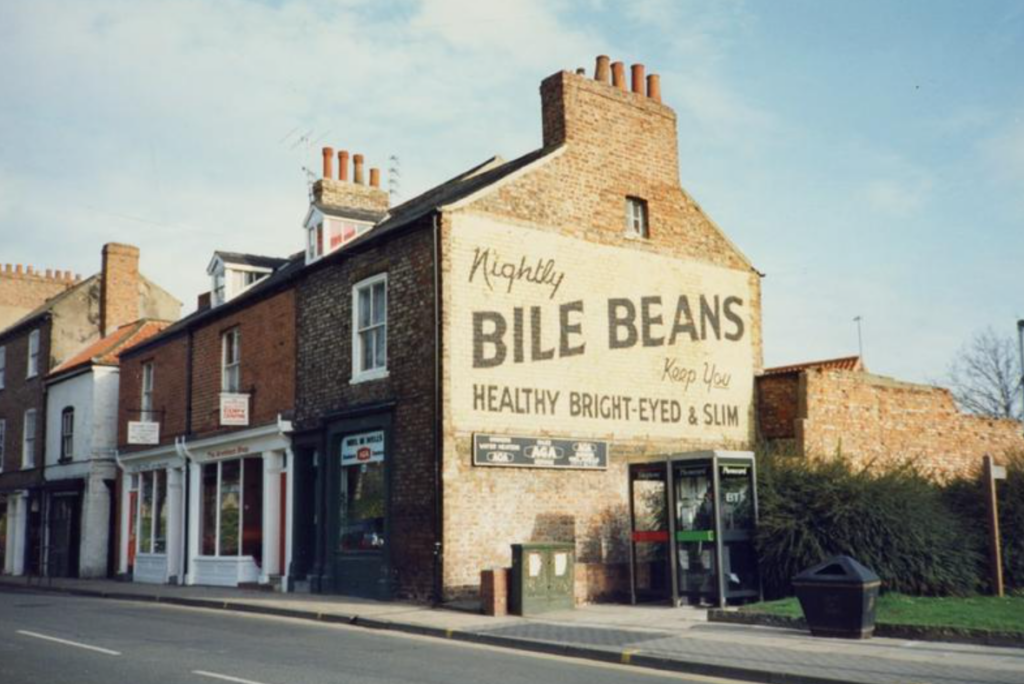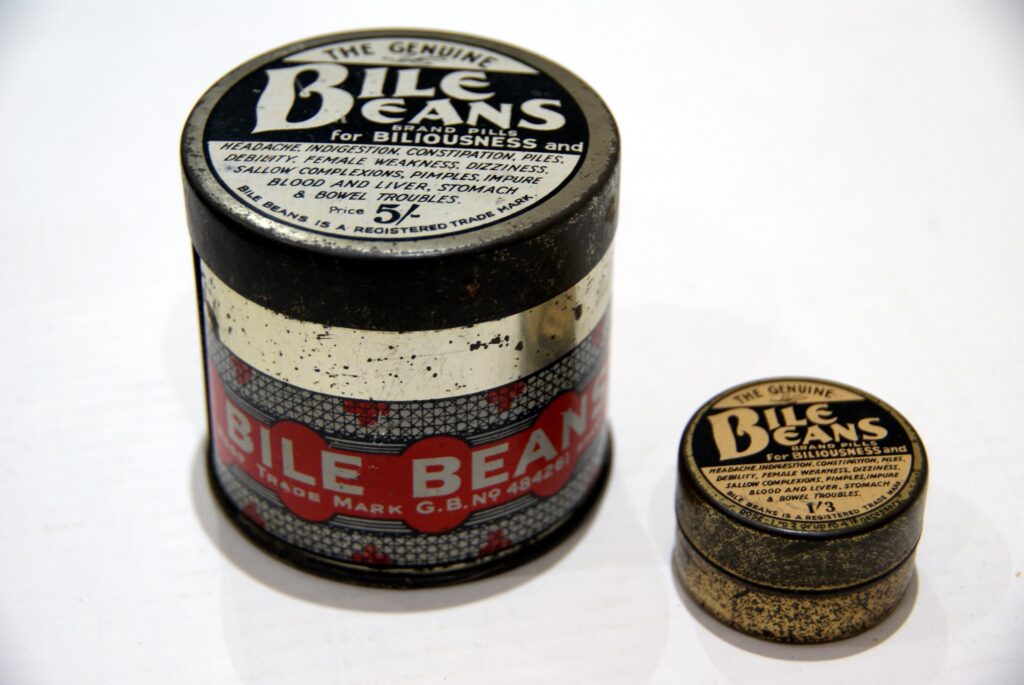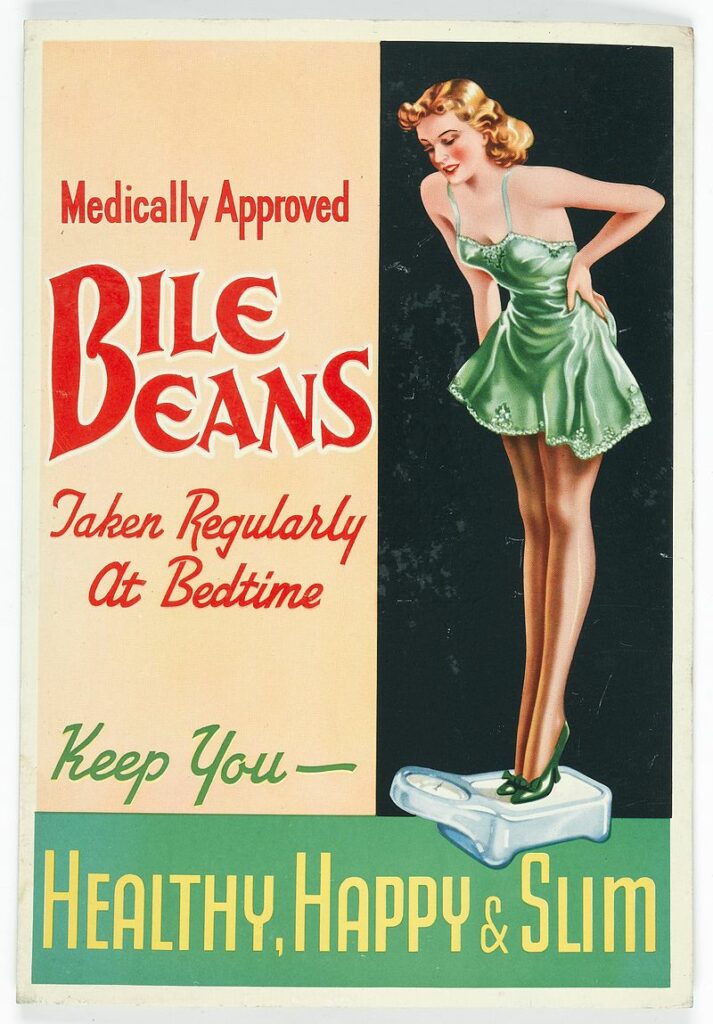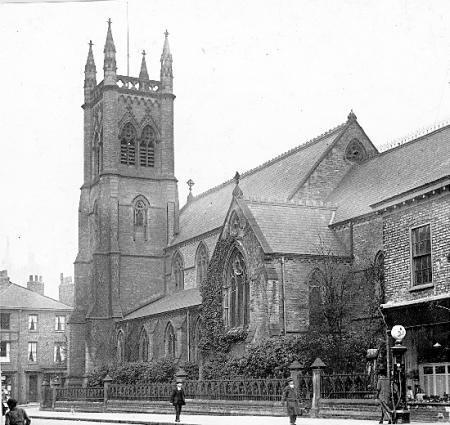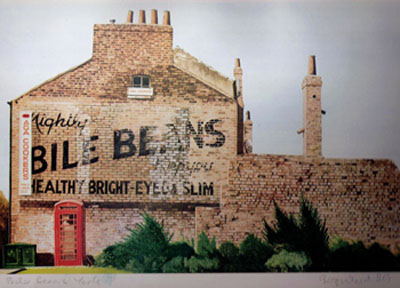Address: 18 Lord Mayors Walk, York, YO31 7HA
Description
Perhaps York’s most famous ghost sign features bold black lettering against a bright yellow background, stating, ‘Nightly Bile Beans Keep You Healthy Bright-Eyed & Slim’.
History
The famous Bile Beans sign, which adorns a wall near the crossroads of Lord Mayor’s Walk, Monkgate, and St. Maurice’s Road, was originally painted in the late 1970s, and then repainted in the 1980s by the York Arts Forum.
However, the sign’s story – and the product it advertised – dates back much further.
The Product
Bile Beans, ultimately a con, were invented in the 1890s by English entrepreneur Charles Fulford. These so-called “cure-all” pills were originally attributed to Australian chemist Charles Forde.
According to their myth, Bile Beans contained a secret Aboriginal ingredient discovered by Captain James Cook that promised miraculous cures for ailments like indigestion, headaches, pimples, and even ‘female weakness’.
In reality, Fulford made the beans from a mixture of rhubarb, liquorice, and charcoal powder rolled in gelatine. The Aboriginal ingredient and Captain Cook’s involvement were mere marketing ploys.
Despite the deceit, Fulford’s marketing strategy worked brilliantly.
Bile Beans were sold across the UK and worldwide, with advertising campaigns quickly adapting to claim they could cure whatever was popular at the time, from flu outbreaks to digestive issues.
The Sign
You might assume the Bile Beans sign was originally painted in the late 19th century, when the product first gained popularity.
However, this was not the case. Back then, the wall where the sign is now displayed would have been hidden from public view.
Until the 1940s, the crossroads between Lord Mayor’s Walk, Monkgate, and St. Maurice’s Road looked very different.
St. Maurice’s Church, a Victorian recreation of a medieval chapel, once stood on the grassy corner where a solitary headstone now remains.
Before the 1940s, the wall that now features Bile Beans formed one side of a narrow alley and was thus unsuitable for advertising.
This changed when the church and surrounding buildings were demolished to widen the roads for motor traffic.
The owner of the remaining property was left with a large, blank wall, which Bile Beans quickly snapped up for advertising.
Though Bile Beans vanished in the late 1970s, their bold marketing campaign endures as a nostalgic glimpse into past advertising.
The sign remains a quirky emblem of York’s history, now selling nostalgia instead of dubious cures, with T-shirts bearing the iconic slogan that continue to captivate the public imagination.

A Bile Beans shirt, sold in a shop that interestingly features a ghost sign on its front
Got thoughts or a story to share about this iconic sign? We’re all ears—drop your comments below and join the conversation!

